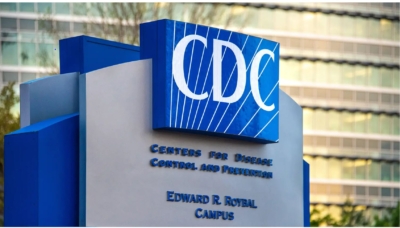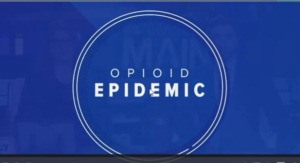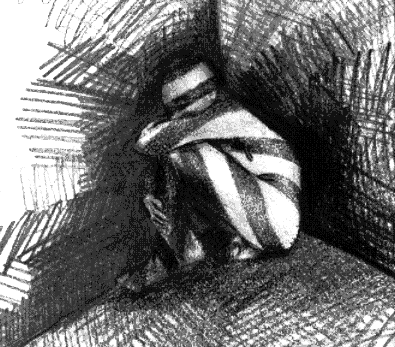The Challenge of Harm Reduction
Changing Attitudes Toward Addiction Treatment
In our first session, Peter, a successful lawyer, told me that he’d been smoking crystal meth for the past two years. “I know it’s dangerous,” he said. “But it’s like I’m having a love affair with meth, and I’m nowhere near ready to let it go.” Indeed, his drug use was connected to sex. Every few weeks, he’d go on binges, drifting in and out of people’s apartments or hotel rooms, smoking meth and having sex with men: some he knew, most were strangers. He looked almost blissful as he described sex scenes that lasted for hours. “But in the last few months, it’s gotten a little rough,” he said, taking a breath. “I started slamming it,” meaning he’d been injecting the drug intravenously. He pulled up his sleeve to reveal a red, swollen arm marked with scars, scabs, and infected puncture wounds. The damage was so alarming that I gasped.
Another client, Sarah, drank alcohol and smoked marijuana every night to the point of blacking out. With no memory of how she’d gotten herself to bed, she’d wake up groggy with a splitting headache, take aspirin, drink a cup of coffee, and drive to a job that she hated. In her view, she drank and smoked to relax, but occasionally her hangovers caused grand mal seizures that hadn’t killed her yet but probably would. Her doctor had been trying to persuade her to stop using substances for seven years with no success. She didn’t want to stop, but she didn’t want to die, which is why she was working with me.
Drew was a 20-year-old man who’d taken a year off from college to recover from a life-threatening staph infection. During that time, his drug use had gone from an occasional beer or joint to near daily use of some combination of marijuana, alcohol, Xanax, heroin, pharmaceutical opiates, and cocaine. He prided himself on being well-educated about the risks of drug interactions and knowing how to stay safe. He loved getting high but wanted to “fine-tune” his drug use, now that he was back in school. During a phone session, I became alarmed at how intoxicated he was. He reassured me that he’d only used “a little” heroin and drunk one beer. Opioids and alcohol can be a lethal combination. I told him I’d call back in 15 minutes and if he didn’t answer the phone, I’d alert school security and his parents. When I called back, he didn’t answer. Security found him passed out under his bed. He was brought to the hospital and revived from a possible overdose.
Peter, Sarah, Drew—what would you have done if they were your clients? Many therapists would’ve referred them out immediately, likely to a treatment center where abstinence is a prerequisite for therapy—and likely not one of them would’ve gone there for help. The therapists, nonetheless, could’ve wiped their foreheads—phew!—believing they’d dodged a dangerous, messy, and wholly untreatable liability of a client.
I’ve spent my career as a psychotherapist working with people who use drugs in risky, problematic ways, and, yes, it can often feel like navigating through a minefield. But decades of experience have taught me that most of our assumptions about these people as clients is wrong. Peter, Sarah, Drew—all were able to make good use of psychotherapy with me over time, and all had positive outcomes in the end. While the dominant thinking in the field is that active drug users can’t benefit from psychotherapy until they’ve stopped using, I’ve come to view this perspective not only as backward, but harmful.
For many people, their drug use serves a function that’s vital to their psychic survival. It’s a meaningful response to the psychological impact of the conditions in which they live. Although they may be in intense pain and worried about their behaviors, many don’t want to stop using. This is where they are—and this is where we must meet them if we want to be of help. Until they’ve done the challenging and sometimes painful work in therapy, many people can’t even begin to imagine curtailing their drug use. Therapy, in this case, is a before, not an after; and their engagement in therapy, rather than their abstinence, is the primary goal of treatment.
Is this an incredible challenge for the therapist, to focus on engagement, creating safety and trust while risky behavior continues?
Yes. People with these behaviors tend to look outside for relief, and often hold others responsible when things don’t go well. They frequently have deep attachment wounds due to early trauma, and might leave therapy at any moment. An acute sense of shame, guilt, and vulnerability contributes to secretiveness and lying—to themselves and others. Trust can be hard to develop, and even the strongest therapeutic relationships will be tested many times along the way. But isn’t this what we do as therapists? We heal shame, treat trauma, build trust, repair the therapist–client relationship, again and again and again.
Yes. Addiction is a complex issue, often frightening and mystifying. But I see it as part of universal human experience. Who hasn’t felt compelled to do something over and over despite negative consequences? Eating foods you know are bad for you, calling an old lover when you know it’s a bad idea, making an expensive purchase when money is tight? Drug users engaging in behaviors they know are dangerous are at the extreme end of this spectrum, where deeply cherished people, possessions, and values often get jettisoned in the addictive process. Addiction is the experience of losing control over oneself, and helping clients explore this reality without judgment is critical.
Yes. Uncertainty and danger are front and center in this work. Each session might be the last time I see a client. I don’t always know whether clients are telling me the truth. And even if I’m certain I know what’s going on and have accurately assessed their risk, things can change dramatically from one session to the next. I’ve felt incredibly frustrated, disappointed, exasperated, anxious, and angry. At times, I’ve woken up in the middle of the night worrying about a client, which is generally a sign there’s something I need to address with that person right away. I might call the next morning to check in with them. The more involved in therapy a client becomes, the more emotionally invested in their well-being I become, and I have not lost a single client to a drug-related death.
The Social Context and the Traditional Model
There’s no doubt that, on the whole, we’ve been doing a terrible job of helping people who struggle with substance use. Addiction has become one of America’s most urgent humanitarian crises. Twenty million Americans suffer from serious alcohol and drug use disorders, and 100 million suffer from less severe problematic substance use that has significant public health consequences. Over the last 20 years, overdose deaths have steadily increased. In 2017, 72,000 people died of an overdose—an average of 200 per day. That’s more than all Americans who died in the Vietnam War and equivalent to a 9/11 every three weeks. Yet only two and a half million people with substance use disorders—a little over 12 percent—are in specialty addiction treatment. And the majority of these are mandated. Why are so few people who struggle with drugs seeking treatment?
Our society is saturated with dehumanizing, stigmatizing narratives about addiction as a disease and a moral failing. Ask anyone—even many therapists—what comes to mind when they think about “addicts” and you’ll likely hear: weak, selfish, sick, pathetic, manipulative, criminal, dangerous, filthy, and so on. This common perception, of course, contributes to drug users’ reluctance to seek help and tendency to be secretive and withdraw from potentially supportive relationships. If people use drugs when they feel bad, isn’t it obvious how this kind of internalized and institutionalized stigma would contribute to increasing it? It’s a vicious cycle, but how did we get here?
Let’s go back to the 19th century, when drinkers in our Puritan society were considered destructive and immoral. This stigma fueled the prohibition of alcohol from 1920 to 1933, a terrible failure by any measure. Drinking ultimately increased and became more dangerous due to poisoned illicit alcohol. And not only was organized crime born, political corruption rampant, and tax revenue lost, but many alcohol users switched to opium, patent medicines, cocaine, heroin, and other dangerous drugs.
Then there’s the rampant racism at the core of so much of our legislation. In Victorian America, alcohol use was associated with groups of people considered morally repugnant by white Protestants, while opioid use was thought of as a perfectly suitable pastime for “respectable women.” But as the face of addiction changed, so did our country’s policies. In 1914, lawmakers passed the Harrison Narcotics Act, requiring narcotics sellers and distributors to register with the government and pay a tax. Unregistered persons caught with narcotics could be fined and imprisoned for up to five years, essentially making drug users into criminals.
The criminalization of drugs was further systematized by the founding commissioner of the U.S. Bureau of Narcotics (a precursor to the Drug Enforcement Agency), Harry Anslinger. He’s credited with cementing our current punitive drug prohibition system and, fueled by racism, criminalizing marijuana with false claims of its danger. From 1930 to 1962, when explaining or defending his policies, he was given to curt aphorisms, like “wherever you find severe penalties, addiction disappears.” He advocated for “compulsory commitment” and believed that the “addict” should be picked up and forced into institutions.
In 1971, President Nixon famously called for a war on drugs, which over the decades since has proven to be a catastrophic failure, along the way destroying families and whole communities by locking away massive numbers of nonviolent drug users—mostly men of color and poor people—many of whom still languish in prison. President Reagan signed the Anti-Drug Abuse Act of 1986, which appropriated $1.7 billion to fight this so-called war and created mandatory minimum sentences for drug offenses, further ballooning rates of incarceration for minimal offenses, particularly for people of color. Later presidents expanded the effort. Close to 500,000 people are currently behind bars for nonviolent drug offenses.
Meanwhile, ideas about addiction and its treatment emerged that were anathema to the fundamental beliefs of most psychotherapists. Psychiatrist Lawrence Kolb, the first medical director of the Federal Narcotic Hospital in Lexington, Kentucky, was a prominent voice in shifting the public view of an “innocent addict” to a “vicious addict.” According to him, people with addictive drug use needed to be quarantined in residential programs designed to socially rehabilitate them. But high failure and relapse rates led to frustration in the field and opened the door for widespread acceptance of “confrontational” therapies.
Many of these therapies were based on the 1950s writings of Harry Tiebout, who theorized that “alcoholism” was rooted in “character malformation.” “Alcoholics,” in his view, were incapable of accurate self-perception as a result of an elaborate system of defense mechanisms that simultaneously justified their drinking and buttressed their self-esteem. He believed that this defense structure became entrenched until they hit bottom and experienced full “conversion.” The task of the professional helper, according to Tiebout, was to move them through a process of “surrender, personality reconstruction, and the development of a disciplined way of life”—an early source of the aphorism “Break ‘em down to build ‘em up.” Tiebout exercised widespread influence through his close association with Alcoholics Anonymous, the self-help program created as a supportive community to help people get sober.
According to AA, “alcoholism is a disease of the body and an obsession of the mind,” making abstinence the only form of recovery. Many other programs modeled after it were created to address addiction to other drugs and nonsubstance behaviors, including food and sex. But it turns out that this understanding of addiction as disease was based not on science, but on popular wisdom fueled by The Disease Concept of Alcoholism, a 1960 book by E. M. Jellinek.
According to a 2013 piece by Gary Greenberg in The New Yorker, Jellinek never completed higher education. In 1920, suspected of stealing a half-million Hungarian crowns from his currency-trading customers in Budapest, he disappeared into Serbia, only to reappear some time later calling himself a doctor. In 1944, he was hired by Yale University to work in its Laboratory of Applied Physiology. After the lab was renamed the Yale Center of Alcohol Studies, Jellinek cofounded the National Council for Education on Alcoholism, whose mission was to promote the idea “that alcoholism is a sickness, not a moral delinquency.” While this unscientific disease model, designed to reduce stigma and shame, was certainly an improvement over the moral model, it still closed down the exploration of the complex psychological and social factors that lead to addiction.
In 1997, Alan Leshner, director of The National Institute of Drug Abuse, introduced the next iteration, a brain-based model of addiction, essentially Jellinek’s model with bells and whistles. It explained addiction based on brain changes caused by the biological impact of drugs, but even this is too narrow.
Fortunately, a new paradigm is starting to guide a shift in practice. Harm reduction psychotherapy is based on a biopsychosocial model. This shift rehumanizes addiction and acknowledges how drug use or other addictive behaviors work in different ways for different people as a response to suffering, underscoring the role of mental health professionals in treatment. As physician Gabor Maté regularly states, “The question is not why the addiction, but why the pain.”
From this view, the biological impact of a drug or other addictive behavior is wrapped in meaning related to our psychological, emotional, and physical state, as well as our relationships and social contexts. The drug comes to serve vital psychological functions: coping with symptoms of trauma, shoring up problems of self-regulation, managing overwhelming feelings, offering temporary liberation from a punitive inner critic and relationship conflict, promising pleasure in an otherwise joyless life, to name just a few. Addiction may also disguise parts of the self: feelings, wishes, and needs that are expressed in action, rather than words. Repeated many times, the activity becomes a deeply ingrained, “overlearned habit,” and neural networks develop that are difficult to change.
Neuropsychologist Marc Lewis argues that the brain changes associated with addiction are due to neural plasticity and are the same as those associated with all learning. This view helps us understand why people persist in risky behavior despite serious, even catastrophic, risks. It also suggests why a harm reduction frame that begins while people are engaging in their addictive behaviors is essential to effective therapy for most problematic drug users. We know that people are unlikely to give up their coping behaviors until they have better ones to replace them with.
What Is Harm Reduction?
In short, harm reduction is a set of ideas and practices aimed at reducing the harms associated with drugs and other risky behaviors and promoting positive change without requiring abstinence. Interventions truly start where the person is, with their goals, motivation, and unique needs in mind. Risky behavior is recognized to fall on a continuum of risk and negative consequences. Rather than the singular focus of abstinence, the goal becomes any positive change toward reduced risk.
Beyond that, I see the harm reduction stance as a radical commitment to not imposing one’s values, agendas, and projections on the person we’re trying to help. This is particularly important when dealing with problematic substance users because our own internalized stigma can contaminate our ability to listen and rupture the alliance. The therapeutic implication is an emphasis on a safe, compassionate, empathic, collaborative relationship that supports clients in discovering their truth and what goals and approach to positive change best suits them. This turns the proscriptive abstinence-only approach on its head and empowers clients to take ownership of their positive change journey.
It’s a framework for helping problematic drug and alcohol users who can’t or won’t stop completely—the majority of them—reduce the harmful consequences of use. It accepts that abstinence may be the best outcome for many but relaxes the emphasis on it as the only acceptable goal and criterion of success. Instead, smaller incremental changes in the direction of reduced harmfulness of drug use are accepted and supported. In many cases, issues other than drug use may need to be addressed before drug use is tackled directly. Harm reduction accepts people there.
It was developed in the U.K. in the ’80s as a public health response to the HIV/AIDS epidemic when a doctor from Edinburgh discovered that half his drug-injecting patients were infected with the virus. A government committee then concluded that preventing the spread of HIV took priority over risks associated with continued drug use. In practice, this meant giving people who wouldn’t stop injecting drugs sterile syringes, counseling them on best practices to reduce infection, and offering opiate maintenance as a way to reduce injecting. This radical policy was quite controversial, stoking the ire of people who felt, as former Scottish Health Minister John Mackay did, that heroin addiction is wrong and that a government shouldn’t be “encouraging it by giving people the means.”
Others, like researcher Russell Newcombe, however, amplified the call for a shift from a failed attempt at stopping drug use to mitigating harm as a more rational and effective strategy, putting early thinking around harm reduction firmly on the map. He suggested that our first consideration should be the reality that “most people like to get ‘high’—to change their mental states and processes by chemical or other means—and in this regard, humankind is unlikely to change its ways.” Therefore, by implementing a compassionate, nonjudgmental approach to illicit drug users, we’d be encouraging more people, including teenagers experimenting with drugs, to reach out for help. Ultimately, harm reduction spread around the world during the HIV/AIDS epidemic as one of the most effective public health interventions in history.
My Journey
I got my first job as a psychotherapist in the early ’80s at a research-oriented outpatient treatment clinic in East Harlem in New York City. Early on, I was introduced to the disease model of addiction and the abstinence-only focus of drug counseling. I worked for many years in this way, and although some of my clients were able to achieve stable long-term abstinence, I became increasingly convinced that for too many people this approach wasn’t working. In fact, at the last clinic I directed in this traditional approach, I conducted an informal study that showed 50 percent dropped out after the initial evaluation or were discharged because of “slips” or relapses of their habits. Add in the people who returned to drug use after completing the program and most of our patients weren’t helped by this treatment.
Astonished and deeply troubled by this information, I studied the literature and found that other clinics were reporting at best a 30 percent success rate. Indeed, it was common for rehabilitation programs to tell patients, “Only one out of 10 of you are going to make it,” meaning stay “sober.” These poor outcomes are generally chalked up to patients’ lack of motivation, or sometimes to the nature of the so-called disease itself. When clients say that other issues feel more important to work on than their addiction, they’re told they’re in denial and that these other issues must be put on the shelf while the substance use is tackled. Over time, I began to wonder if this in itself wasn’t harmful, especially for people like Steve.
I met Steve early in my career, when he was a young professional voluntarily in treatment at our clinic. Week after week, his urine tests came back positive for cocaine. When I confronted him about his “motivation” to remain in treatment, per our program protocol, he told me honestly, “I have HIV and live in terror that I’ll get sick and die at any moment. Sometimes I can’t get out of bed in the morning, so I do a bump of coke to be able to get on with the day.”
Back then, HIV was a death sentence. People were dying within six months of the diagnosis. My human and psychotherapist self thought it made perfect sense that he’d use cocaine; it was helping him! Yet my abstinence-only counselor self said to him, “I understand and feel for you, but unless you can commit to stopping the drugs, you can’t remain in treatment.” Although I felt terrible about it, I betrayed my sense of what was right and rejected him from care. I wish I could apologize to him now.
Even today, most treatment programs have high-threshold access, meaning clients must agree to certain requirements to gain access to treatment: urine testing, attending AA meetings every day, breaking contact with other substance users, to name a few. If they can’t meet these requirements, they may be referred for more intensive treatment or discharged from treatment with the statement that they should come back when they’re ready.
The idea that people needed to “hit a lower bottom” to become more motivated to stop using became unacceptable to me. For many people, the bottom is death. It seemed as if our field was blaming our failure on our clients, rather than taking responsibility for the problem by looking at how our approach might be limited by its own basic assumptions and processes. Finally, in 1987, I went into private practice, where I was free to work with my clients in a more flexible way. I took on clients who weren’t interested in stopping their substance use but wanted help figuring out if they could learn to use in less damaging ways. I knew I’d be breaking the conventional rules by agreeing to work with them, but it seemed to me that stable moderation would be a great improvement, and our therapeutic process might even help them stop altogether.
Over the next several years, I began to see significant breakthroughs and gains in my clients. Many cut down their substance use significantly, while others did become motivated to stop altogether. All of them worked hard in therapy, even while continuing to use. Of course, I worried that if my colleagues knew what I was doing, my ethics would be seriously questioned, but my successful outcomes drove me forward. Then, in 1994, I mentioned what I was doing to Alan Marlatt, a trailblazer in the addictive behaviors field.
“You’re doing harm reduction,” he said matter of factly. I’d never heard the term before, but he and social worker Edith Springer had been introduced to harm reduction in Europe and were among the first to bring it to America. Not surprisingly, the idea of integrating it into addiction treatment was met with skepticism here. People considered it irresponsible, even preposterously dangerous. They shouted that it would be “enabling the disease.” But I and several other clinicians, including Patt Denning, Jeannie Little, Stanton Peele, Marc Kern, Fred Rotgers, Debbie Rothschild and Scott Kellogg, saw it as offering a vision for how to set up more effective therapy for this group of clients.
In the years since, particularly given our failure to solve our ongoing addiction crisis, a growing number of addiction experts, government officials, and communities have come to embrace this paradigm. I see it as a treatment revolution continuing to gather steam.
Facing Up to the Risks
What does this treatment look like up close? As I said earlier, it’s not without its intense challenges, as with Peter, the lawyer who’d started slamming crystal meth amidst sex binges. When we first started working together, I was intensely curious about his “love affair” with crystal meth. What about it would make him risk his marriage, his career, his life? After all, he found his work meaningful and important, he loved his husband of many years, and he was not consciously suicidal.
Of course, he also loved the way meth ignited an explosion of dopamine in him, heightening and prolonging sexual pleasure. Was he simply an overindulgent, selfish, pleasure seeker? I didn’t think so. Rather, the presumption that this love affair was deeply meaningful to Peter became the basis for our therapeutic alliance and the guiding principle for our wok together.
The prospect of undertaking this journey with him felt daunting nonetheless. And as he brought me into his world, I had to work hard to contain a flood of intense fear of what might happen to him. Meth use is associated with heart attacks, paranoia, psychosis, and violence. Every time Peter embarked on one of his binges, he could die. Being in a group of people who are all using meth for days at a time with no sleep increases these risks exponentially. Not only that, but meth-fueled, multiple-partner sex increases the risk of contracting sexually transmitted infections, including HIV and HEP-C.
Despite all this, or perhaps because of it, I felt privileged that he’d risk opening up to me, not knowing how I’d react. Peter was bright. I was impressed that he’d been able to maintain his law practice without any obvious consequences, but we both knew that if he continued at this level, it was only a matter of time. Already, his marriage had been damaged, he hoped not irreparably, although he was aware that his conflicting feelings about being married played into his behavior.
Over the years of working with people struggling with issues like Peter’s, I’ve come to see how the risks associated with addictive behaviors are decreased when people are engaged in sophisticated, meaningful psychotherapy; and this can happen while they’re engaging in those risky behaviors—to a point, of course. As with suicidal people, psychotherapists need to use clinical judgment to determine when a person poses a clear and present danger to themselves or others and therapy is not enough. However, this moment is not always clear: making these determinations requires a special understanding of high-risk behaviors that’s not generally taught in training.
I agreed to work with Peter initially because his openness and self-reflectiveness left me feeling hopeful. As our work unfolded, I came to know him as thoughtful and worldly, with a wry sense of humor. Despite his drug use and days with no sleep, he took good care of himself, looked healthy, and was always well dressed, albeit in long sleeves. One day, several months into our work, he came to our session saying he was really concerned about his injecting: his arms were getting infected.
When he pulled up his sleeve, I felt shock, intense empathy for his pain, and an overwhelming urge to make it better for him, though I knew I couldn’t. We’d been discussing his self-care for a while, and he had a plan to see a doctor, but he hadn’t followed through on it. He was afraid of what the doctor would tell him, afraid of how he’d treat him.
Was his fear justified, given how many helping professionals perpetuate the stigma about drug users? Was it a projection of his own guilt and shame? Likely both, but the stakes were getting higher for Peter now that he was injecting. After all, there is no safe injecting of illicit drugs, no matter how careful you are. Users can’t know precisely what they’re injecting. Currently, fentanyl—an opioid that’s 50 to 100 times more potent than heroin—has started showing up in crystal meth, and it’s been responsible for a huge number of drug overdose deaths over the last few years.
After each session, I had to live with the awareness that I might not see Peter again. But managing this fear is part of the emotional challenge of doing this work, and I’ve learned to hone it, to use it as a kind of intuitive gauge of when the client’s risk is becoming too great.
I taught Peter mindfulness and breathing techniques to manage the distress of sitting with his urges to use, to “surf” them, and become curious about them. In one session, I invited him to dialogue with the urge. What did the urge want to get away from? What was living in the urge? As he described feelings of grief, rage, shame, and guilt, tears spilled from his eyes. I suggested he breathe to comfort himself and asked if he was open to talking about what was coming up.
He realized that his fascination with meth had begun when his mother was diagnosed with metastatic breast cancer. As a child, he’d felt that she hated him and blamed him for her problems with his father; and he’d resented her for divorcing his father and remarrying a man with three children she seemed to love more than him. Growing up gay in the Deep South didn’t help. “Whenever she looked at me, her eyes were stone cold, like she wanted me to die,” he said. Yet of course he longed for her love.
After she died, the combination of not wanting to confront the mess of his feelings and feeling liberated from trying in vain all his life to please her, caused him to fly into the arms of meth with total abandon. Only now, in therapy, did he feel he had a safe place in which to deal with it all. Over the next several months, he linked his risk taking to a sense that he didn’t deserve to live. If his mother had hated him, why should he care about himself? As our work shifted to focus on helping him make sense of his experiences and feelings, his desire to be safer with his drug use and sexual practices increased, and, ultimately, so did his desire to stop using meth entirely.
Currently, Peter hasn’t used meth in several years. He continues to drink alcohol and smoke pot regularly, but within limits that work for him. His marriage has improved, and he and his husband are committed to making the relationship as satisfying as possible. I think his wish to be loved somehow survived his mother’s rejection and made it possible for him to engage in therapy in an open and meaningful way. The safety of a relationship that accepted his frightening, provocative behavior allowed him to get underneath it and deal with his painful history.
Harm Reduction Comes of Age
My vision for applying harm reduction to therapy is called Integrative Harm Reduction Psychotherapy (IHRP). It’s a multifaceted approach that brings together psychodynamic, relational, cognitive, behavioral, motivational, stages of change, and mindfulness-based therapies in a harm reduction frame. Each of these therapeutic traditions has strong empirical support. Decades of research also support a primary emphasis on establishing and maintaining a therapeutic alliance based on respect, empathy, caring, and collaboration. IHRP brings this emphasis into the treatment of addictive behavior.
It’s unfortunate that it often takes a crisis to shake people out of their adherence to ideas that don’t work. But in the last few years, there’s been a sea change in thinking about addiction that’s reflected in a growing embrace of harm reduction therapy. Eight years ago, I founded the Center for Optimal Living in New York City, which has grown significantly each year as clear evidence that the community wants and will support harm reduction psychotherapy. Each year, we also get more requests for IHRP training from individual clinicians, organizations, and state and city governments.
Professional support for harm reduction psychotherapy has been growing as well. The American Psychological Association’s Society of Addiction Psychology featured this approach at its recent annual conference, as did the American Academy of Addiction Psychiatry. The executive board of New York State’s Division on Addiction comprises psychologists who are all committed to practicing it, and the National Association of Social Workers has promoted it in several recent publications. Harm reduction psychotherapy is coming of age.
– – – –
My client Valerie told me in our first session that she’d been injecting the prescription opioid Dilaudid, or hydromorphone, four to five times a day. The effects of this drug are indistinguishable from those of heroin. She worried that she’d lose her children and it’d destroy her family if anyone found out, but she also said she loved the drug and wasn’t ready to stop.
In exploring this love of getting high, we discovered a history of childhood physical and sexual abuse that the drug helped her cope with. As we did the hard work of processing these experiences, Valerie continued to use. After 18 months, she felt she had significant resolution, went to a detox, and has been free from drugs for the last four years. She still drinks moderately. Recently, she told me, “I’m happier now. It feels good not to be dependent and keep secrets. I’m more self-accepting, less anxious, and less angry. But mainly, thanks to our work, the voice in my head is kinder.”
Working with clients struggling with addiction can be a rough slog into the dark side of human nature. It often means forging relationships with people who it’s easy to give up on. Not every therapist is cut out for it. But if you’re willing to devote yourself to their treatment, it’s essential to keep reminding yourself that there’s more to people than their worst behavior. It also requires maintaining a conviction—no matter how hard it might be—that helping clients face the pain driving their addiction can sometimes be transformative, and even when it’s not, being life-saving is more than just good enough.
***
Andrew Tatarsky, PhD, is the developer of IHRP and author of Harm Reduction Psychotherapy: A New Treatment for Drug and Alcohol Problems. He’s the founder and director of the Center for Optimal Living in NYC, a treatment and professional training center based on IHRP. Contact: atatarsky@cfol.org.
Tell us what you think about this article at letters@psychnetworker.org. Want to earn CE hours for reading it? Take the Networker CE Quiz.
***
Integrative Harm Reduction Psychotherapy
Although IHRP strategies are collaborative and tailored to the specific issues around each client’s problematic substance use, here are six core principles:
1. Forging the Therapeutic Alliance.The foundational principle of IHRP is meeting clients where they are, even if they’re actively using. Presume there is intense vulnerability and likely trauma present. Identify and challenge generalizations about drug users, and get clear about your own tolerance for risk, extreme frustration, uncertainty, and fear.
2. Offering Corrective Emotional Experiences. Accepting and respecting lying, hiding, intoxication in session (to a point), and other behaviors that are frustrating and scary is where the therapeutic action of corrective emotional experience happens. Self-hate, guilt, and shame are healed gradually over time through a therapist’s patience and ability to stay accepting, respectful, and calm, even when provoked.
3. Teaching Self-Regulation. As with all clients, you can help those with problematic drug use to strengthen their ability to sit with difficult feelings through mindfulness, breathing, self-talk, and the specific technique of “urge surfing.”
4. Assessing Risk. Risk assessment is part of an ongoing, collaborative conversation that’s only possible with a strong alliance and near-constant tracking of how comfortable the therapist feels supporting the work. The therapist must be willing do a microanalysis of scary events, feelings, thoughts, urges, choices.
5. Affirming the Client’s Ambivalence. There’s much work to be done before many clients can stop their drug use, if they ever do. As with all clients in any therapy, welcome the part of them that doesn’t want to change, or else that part will sabotage positive, healthier change efforts.
6. Setting Positive Change Goals. Work with both the part that wants to use drugs and the part that wants to use more safely, cut back, or stop. Affirm whatever clients feel they can take on, and empower them to be in the driver’s seat in creating a personalized vision around ideal use, as well as a game plan of how to get there.
***








Leave A Comment